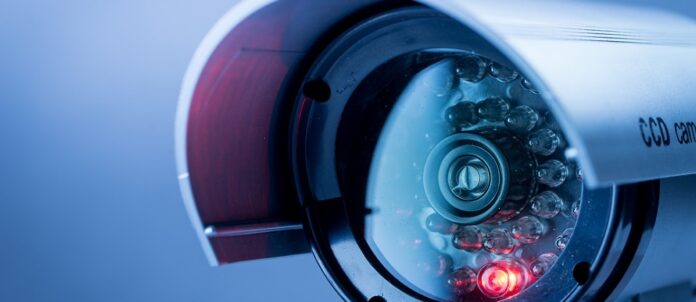To ensure the best video capture of the scene you are interested in, it is important to position the camera correctly with other aspects as well. If the camera is too far away and/or the resolution is not high enough, then the quality of the recording will not allow you to identify the perpetrators and bring them to justice.
Where will you place the security cameras?
When choosing a place for the camera, you need to consider the following aspects in advance:
- Roof eaves/overhangs are often the cause of infrared reflections and blown out video footage. Even when the canopy itself is out of the camera’s field of view, if the axis of the lens is parallel or nearly parallel to the overhang, reflected IR light from the canopy will hit the camera.
- Check to see if there are other sources of light near the camera, such as street or garage lights, that reflect light from which could potentially affect the image received from the camera.
- Do not place the camera behind a window or other glass and positioning of camera bell should also be appropriate for easy access. In night vision mode, the IR LED light will bounce off the glass back onto the camera, causing the image to be blown out.
- Do not install cameras facing each other. The IR LEDs of each camera will shine on the lens of the opposite camera, which will affect the quality of night recording from both cameras.
- Do not mount the camera under the edge of a canopy, as this may cause damage to the camera from rain, snow, or freezing rain that will freeze on the camera.
- Make sure that people passing by the camera cannot reach it. In the event that the use of the camera assumes that it will be within reach, it is recommended to purchase a special anti-vandal camera.
- Consider such a factor as swarming insects. They usually swarm around cameras with IR illumination. Get ready to clean the camera from time to time from midges, flies and spiders that fill up in all the cracks.
- If you’re buying a night and daytime license plate camera, be aware that this use case has more stringent camera placement requirements. The vehicle must pass no more than 15 degrees from the axis of the lens. Also make sure that the camera cannot be bumped into.
What type of wiring to use?
The preferred type of wiring depends on whether you already have a set of security cameras or whether you have chosen at least the type of cameras (in terms of interface). Two main types of cables are used for video surveillance: RG59U and network cables. RG59U is a coaxial cable designed for analog CCTV cameras and HD cameras.
Network cables such as CAT5e or CAT6 are commonly used for IP cameras, although with a special adapter (called a video balun) they can also be used with coaxial HD cameras. Both types of cables are commercially available, both in coiled cable format and as ready-to-use cables with appropriate connectors.
HD cameras with coaxial connection or IP cameras?
HD video surveillance cameras with coaxial interface, such as HDCVI and 4-in-1, are relatively inexpensive and can transmit video over cable over longer distances than network cameras can. We recommend HDCVI or 4-in-1 cameras because they allow you to receive a cable signal up to 487 meters from the camera installation site. HDCVI cameras can transmit video, audio, and PTZ data over a single coaxial wire in an RG59U cable.
PoE-enabled IP cameras can transmit video, audio, and PTZ data as an information signal over a distance of up to 90 meters without using a PoE amplifier that repeats the transmission of the information signal using PoE. However, some low-power camera models using proprietary PoE amplification technologies can transmit information over a cable up to 300 meters.
Conclusion
By reviewing the tips for security camera system selection, you can easily make the decision for the right one.








